What Are the Four Big Ideas in Reading Comprehension and Why Is Each Important for Learning Content?
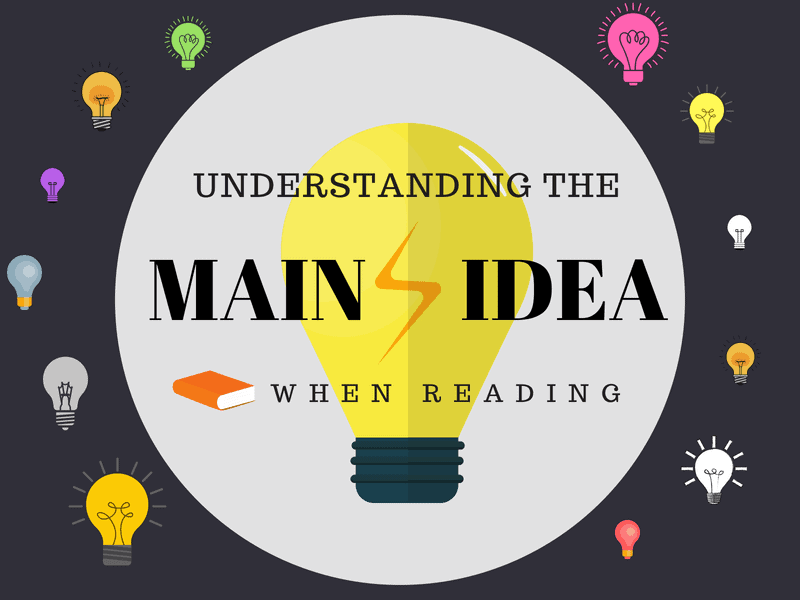
READING FOR MEANING: IDENTIFYING THE Master IDEA OF THE STORY
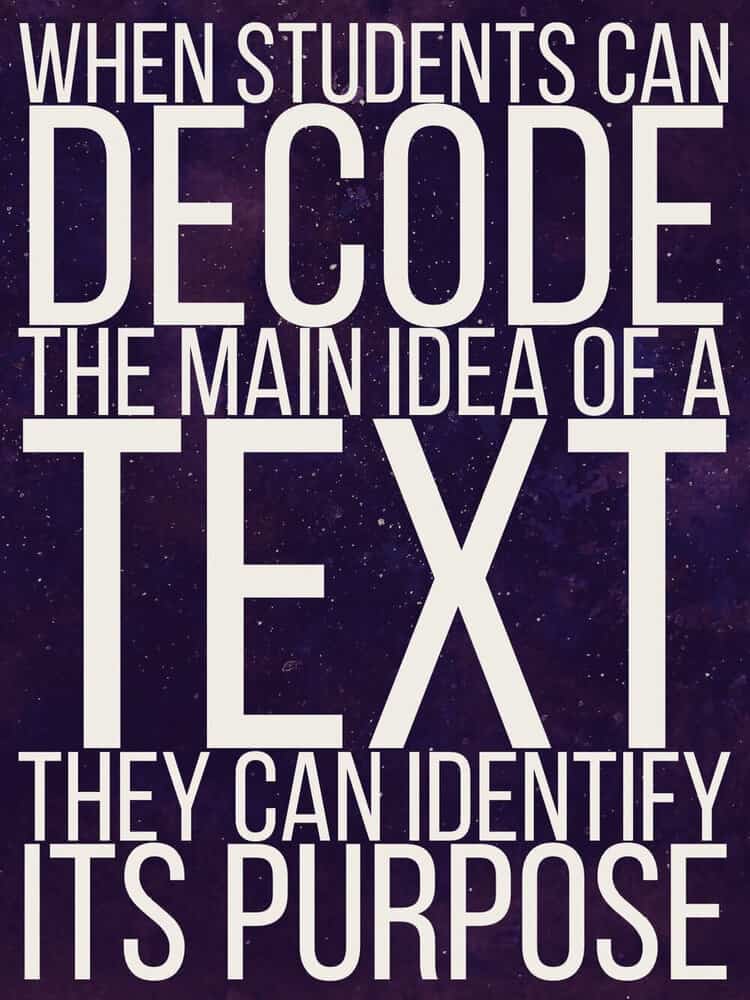
We have all been there, though it can often experience equally futile equally the search for that proverbial needle in a haystack…
Finding the master thought of a slice of writing can be a challenge, but it is an essential reading comprehension skill for our students to develop. Students that become skilled in this art will benefit from information technology far beyond the perimeters of the school gates. From the small impress of an insurance document to writing a volume review, the ability to filter a text and identify its primal idea is as much a crucial life skill as an essential literacy-based learning objective. Though it isn't always easy, luckily at that place is much we tin practise to help our students hone their abilities in this area.
WHAT IS 'THE Primary IDEA'? DEFINITION
Whether we are talking about the main idea of a paragraph, a poem, a chapter, or a longer text, finding the main idea requires the reader to identify the topic of a piece of writing and and then uncover what the writer wants us to know about that topic.
As is so often the case, it is best to showtime small-scale. When working with students on how to identify the main idea, begin by having students locate the main idea in a sentence before building upward to locating information technology in a longer paragraph. As students gradually build their conviction in identifying the main thought in paragraphs, they will soon be ready to move onto longer texts in the form of capacity and eventually total-length books.
A COMPLETE DIGITAL READING UNIT FOR STUDENTS
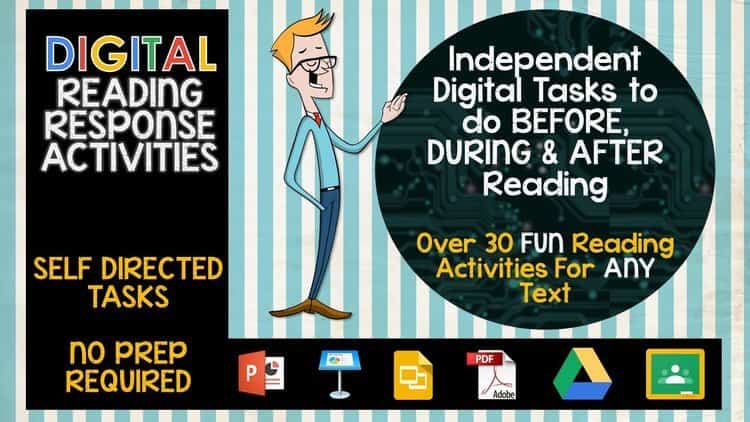
Over 30 engaging activities for students to complete BEFORE, DURING and Later reading ANY Book
- Compatible with all devices and digital platforms including GOOGLE CLASSROOM.
- Fun, Engaging, Open-Ended Contained tasks.
A WORD ON PARAGRAPHS
The main thought of a sentence is usually fairly straightforward to identify. Often information technology is as simple as identifying the bailiwick of the sentence. Whole chapters or books, on the other hand, can seldom be easily reduced to expression in the form of a unmarried, primary idea. For these reasons, the paragraph offers the student the virtually suitable format in which to do their chief idea identification skills.
Usually, if the author knows what they are doing, nosotros tin can identify a unmarried chief idea in every paragraph. Nosotros can retrieve of this as the key bespeak that is commonly expressed in the course of a topic judgement. It is often found in the paragraph'southward first sentence, with subsequent sentences providing the supporting details. It can, notwithstanding, occur in the center, at the end, or even be split up across the paragraph. It may fifty-fifty not be at that place at all – at least non explicitly.
Writers are a artistic agglomeration, and so students will require more sophisticated means to accurately identify the main thought in all cases and that is exactly what this commodity will help you assistance your students to do.
HOW IS A Chief IDEA EXPRESSED?
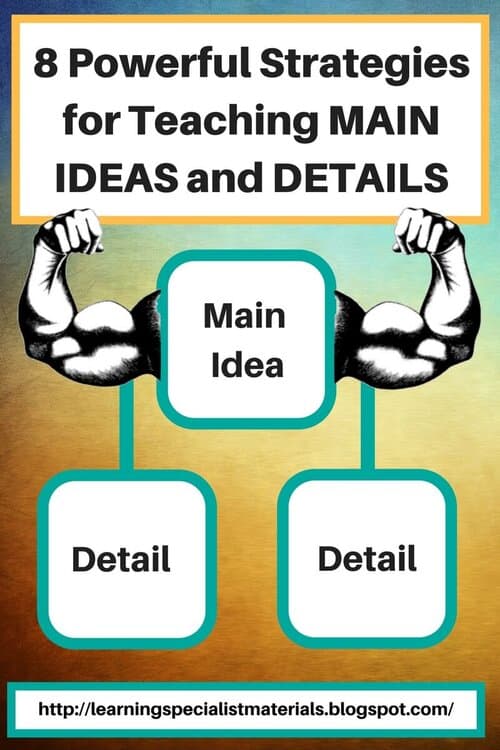
It tin can appear to exist a fairly lucent task to define the primary idea, so why is it oft so problematic for students to place it? Well, the truth is that it needn't exist so. Often the fundamental concept is expressed directly in the text and is as easy to identify every bit your own face in the mirror.
However, the main idea volition not e'er be expressed and so explicitly and students must larn to identify information technology whether it is expressed straight or merely implied if they are to fully comprehend what they are reading.
THE Argument OF THE MAIN IDEA
Attending is the key to pulling the principal thought from a text, whatever the genre. Students demand to place the most relevant information from the piece of work and use it to develop a argument that expresses what they perceive the main idea to exist.
We tin refer to this equally The Argument of the Main Idea. This argument should be a lean sentence or two. The process of composing this statement starts with request questions near the text. Not all questions will apply to every text, but they will provide a good starting point for extracting the main idea from whatever piece of writing.
● Who – Tin the pupil identify the person or people the text is nearly?
● What – Can the pupil identify the topic or underlying theme of the text?
● When – Can the pupil place a reference to a specific time or menses?
● Where – Can the student identify a specific place or a setting?
● Why – Can the educatee identify a reason or explanation for what happens in the text?
● How – Can the student place a method or theory in the text?
These questions, and variations of these questions, tin can assist students describe out what the text is about. The 2 about important questions of those above are who and what. These will be sufficient to elicit the information required to identify the main idea in most circumstances. But, the truthful litmus test of whether the student has been able to blot the text's primary idea is whether or non they are able to summarize what they take read in their own words.
The Litmus Exam: Summarizing and Paraphrasing
We know through our experience in the classroom that learning-through-teaching is an extremely effective instructional strategy. It also offers teachers opportunities to find and assess their students' grasp of the concepts they have been working on. Similarly, when nosotros inquire our students to summarize or paraphrase the master idea of an extract, we are creating an opportunity to discover their comprehension of what they have read and their ability to identify the main idea therein.
Y'all can too encourage students to regularly practice these skills by challenging them to paraphrase and summarize things you have said or read to them in class, even during lessons entirely unrelated to literacy. Encourage them to be concise and to the betoken, you may even wish to set a give-and-take limit of x or 15 words within which they must express the main idea. Keep it lean!

STRATEGIES FOR SUCCESS IN IDENTIFYING THE MAIN Idea
Become The Gist
In this method, give each of your students a re-create of a nonfiction paragraph. If you lot wish, you can differentiate for students' dissimilar abilities by choosing extracts of varying complexities. Regardless of the level of difficulty, the approach will remain the same. Have students:
1. Inquire themselves who or what the paragraph is about.
2. Ask themselves what is the most of import data almost the who or what.
3. Restate the main thought in 10 words or less.
You can model this strategy for your students past walking them through the process first. Project the text onto the whiteboard for shared reading and, with focused support and prompting, have them answer the initial questions.
Part 3 of the process higher up can be undertaken equally a piece of shared writing which will model the correct approach, before students begin to do it independently. After, when students have written independent statements of the principal thought, they tin compare their responses and offer each other feedback. After feedback sessions, they can be given a farther opportunity to redraft and modify their statements for accuracy and brevity.
Through these processes, students will better their ability to identify the main idea and limited it in a clear and concise style.
Get the Gist – Longer Texts
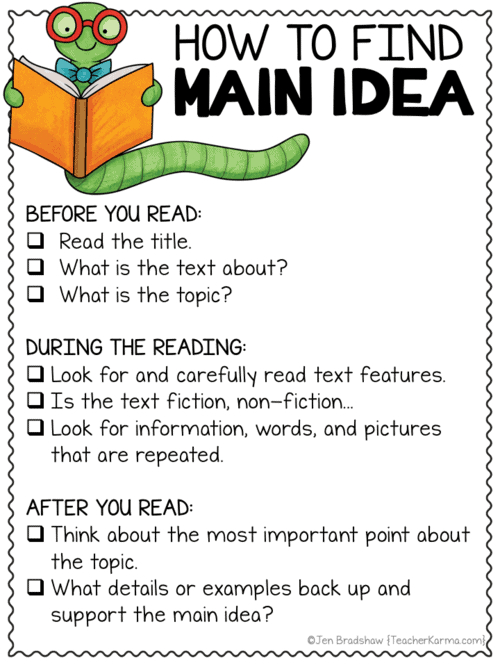
As we mentioned earlier, it isn't always piece of cake to reduce a longer excerpt, such as a affiliate, down to a unmarried central thought – much less a whole book! There will be times, however, where students will be asked to do just that. They will demand a systematic approach to aid them in such circumstances. The following process provides for an constructive approach:
1. Wait at the title – Ofttimes the title provides a good indication of the topic of the text or at to the lowest degree helps to orientate the reader in the direction of the main idea.
2. Look at the showtime and terminal sentences/paragraphs of the extract – Often the main idea volition be introduced and summarized respectively in these parts of the text.
3. Look for repeated words and phrases in the extract -The frequency with which they occur will exist a potent indicator of their relative importance and will signal students in the direction of that elusive chief thought.
four. Instruct students to ask themselves, "What does the writer want me to know?" – Answering this question successfully will require the students to uncover the main thought of the text.
As the students work through each of the above steps they can highlight, underline, or circle the keywords and phrases then use these to assist them course their statement of the main idea.
HOW TO LOCATE THE Chief Thought WHEN It IS Implied
Inferring the main idea requires the student to expect for patterns in the details as they read. Every bit when the main idea is explicit, the student must first identify what the topic of the writing is earlier determining what it is the author wants the reader to know about that topic. If the main thought is non stated explicitly in a sentence or paragraph, then information technology is implied and students must consciously piece of work to uncover it by analysing the details to infer the main thought. Witting practise of this strategy will soon see it go second nature and the student will quickly get skilled in identifying the chief idea even when it is not stated explicitly.
Conclusion
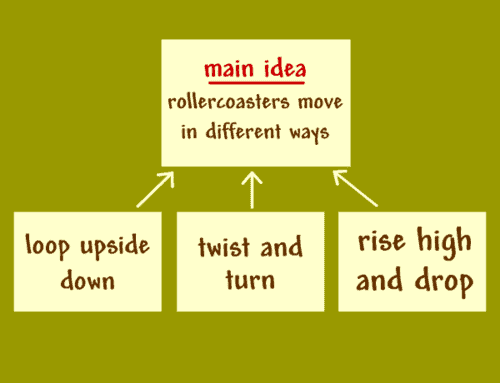
To efficiently identify the master idea in a slice of writing, students should first make up one's mind what the topic of the text is. Then, they will need to work out what it is the writer wants us to empathize virtually that topic. This is the essence of how to identify the chief idea. Students should understand that the main thought may not always exist explicit and they may need to work difficult to uncover exactly what the text implies. Regardless of whether the chief idea is explicit or implicit, every paragraph will have a main idea and students should sympathize that information technology tin can be located at the beginning, in the middle, at the terminate, or fifty-fifty be split upward throughout the paragraph.
With perseverance and hard-earned experience, students volition be able to apply a variety of methods and, at times, a fusion of these methods, to uncover the primary thought with speed and accuracy. Soon they will be able to utilize these methods to a broad range of texts over a wide range of lengths and complexities.
Instruction Resources
Use the resources and tools below with your students to improve their writing skills through proven education strategies.
THE STORY TELLERS BUNDLE OF Educational activity RESOURCES

A MASSIVE COLLECTION of resources for narratives and story writing in the classroom roofing all elements of crafting amazing stories. WEEKS WORTH OF WRITING LESSONS AND Resources including:
Principal Thought GRAPHIC ORGANIZER (Free DOWNLOAD)
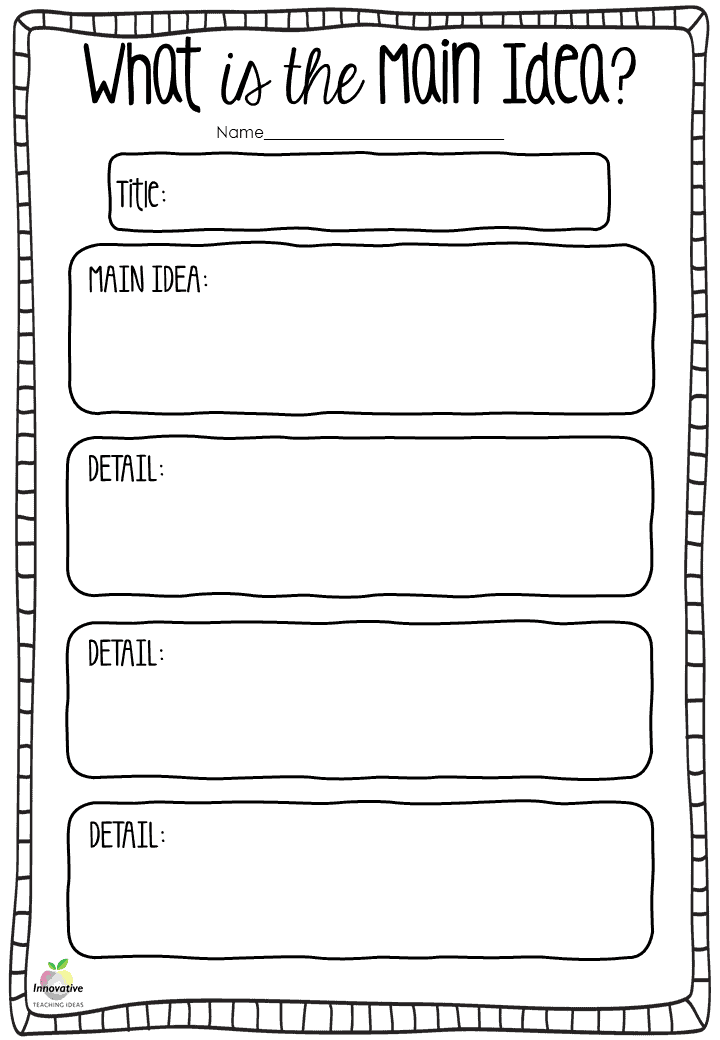
VIDEO TUTORIAL ON TEACHING THE MAIN Idea
ARTICLES RELATED TO THE Master IDEA OF THE STORY
Content for this folio has been written by Shane Mac Donnchaidh. A sometime principal of an international schoolhouse and university English lecturer with 15 years of educational activity and administration experience. Shane's latest Book the Complete Guide to Nonfiction Writing can be found hither. Editing and back up for this article have been provided by the literacyideas team.
Source: https://literacyideas.com/getting-the-main-idea/


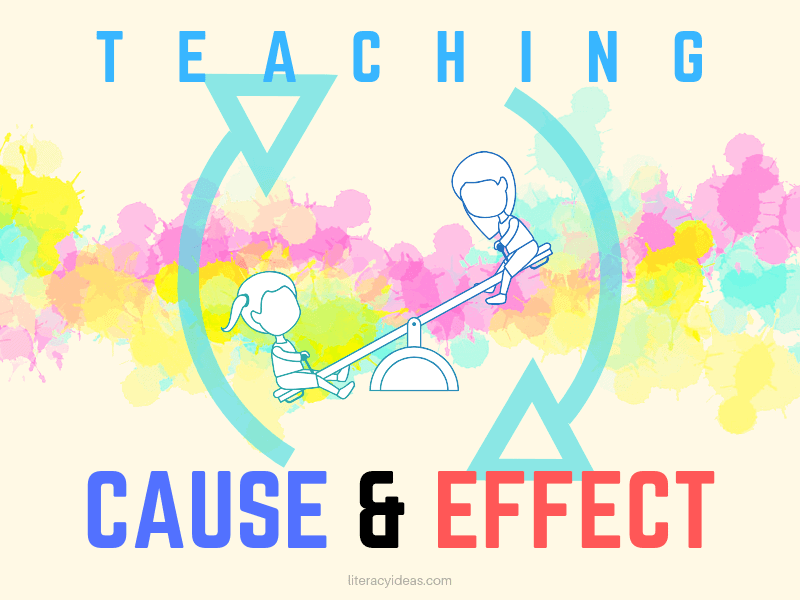


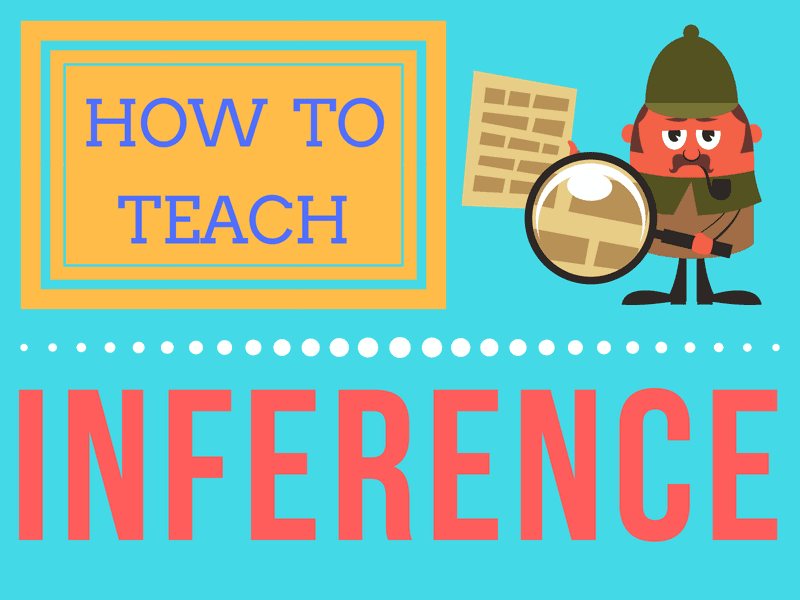
Belum ada Komentar untuk "What Are the Four Big Ideas in Reading Comprehension and Why Is Each Important for Learning Content?"
Posting Komentar